site search
online catalog
THE FIRST DAY’S FIGHT AT GETTYSURG: “REBEL CANTEEN” FOUND ON “SEMINARY RIDGE”
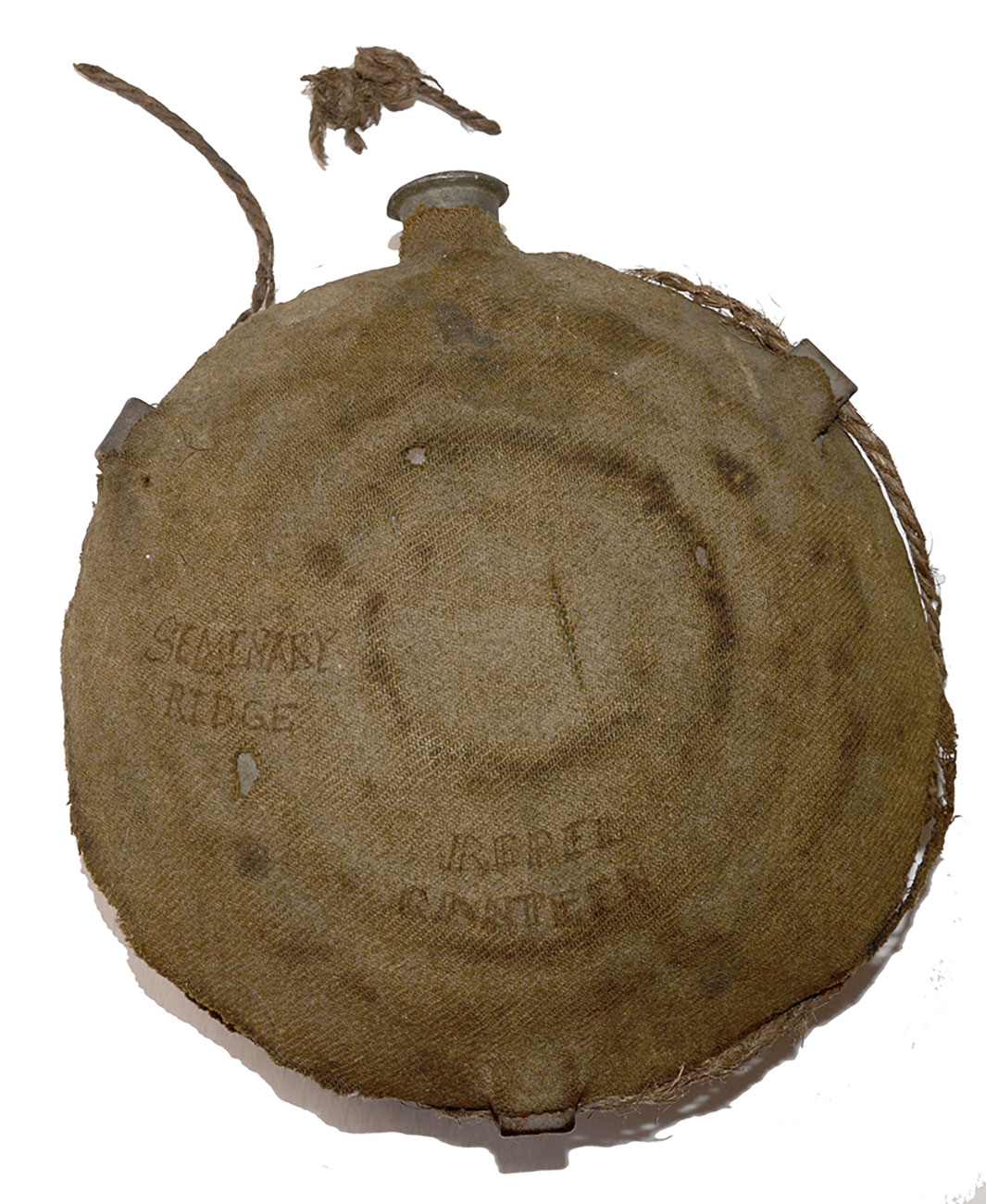
Hover to zoom

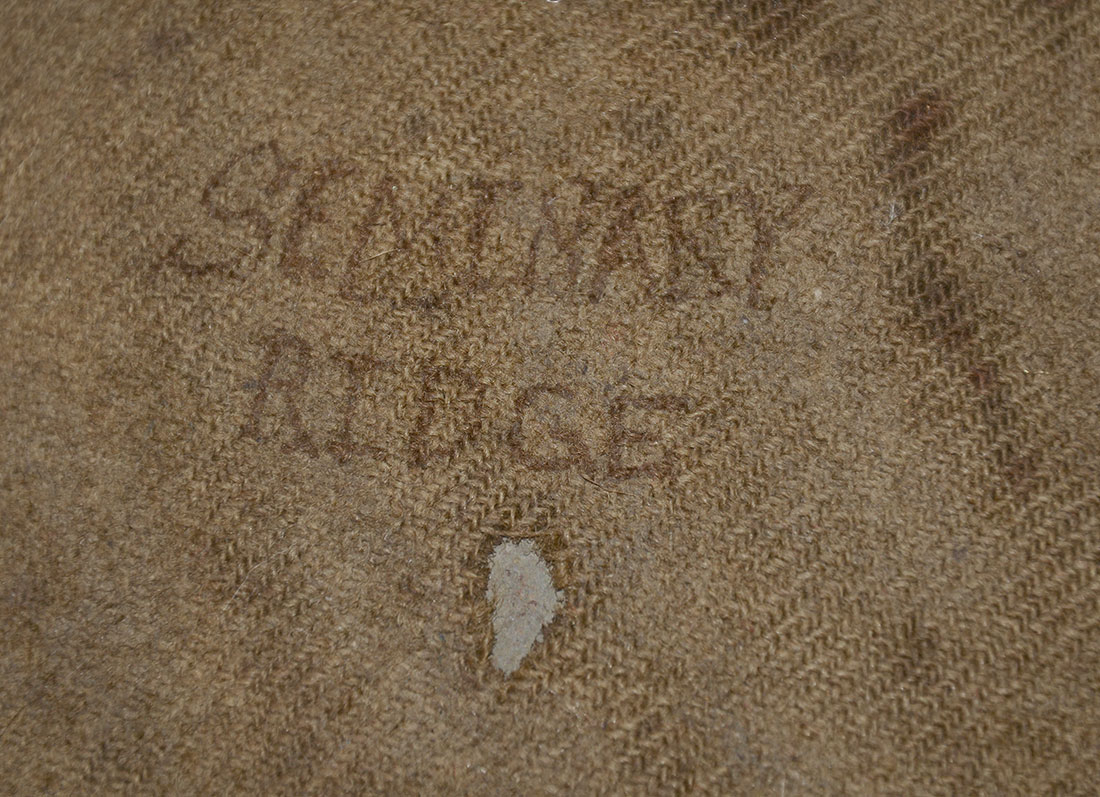
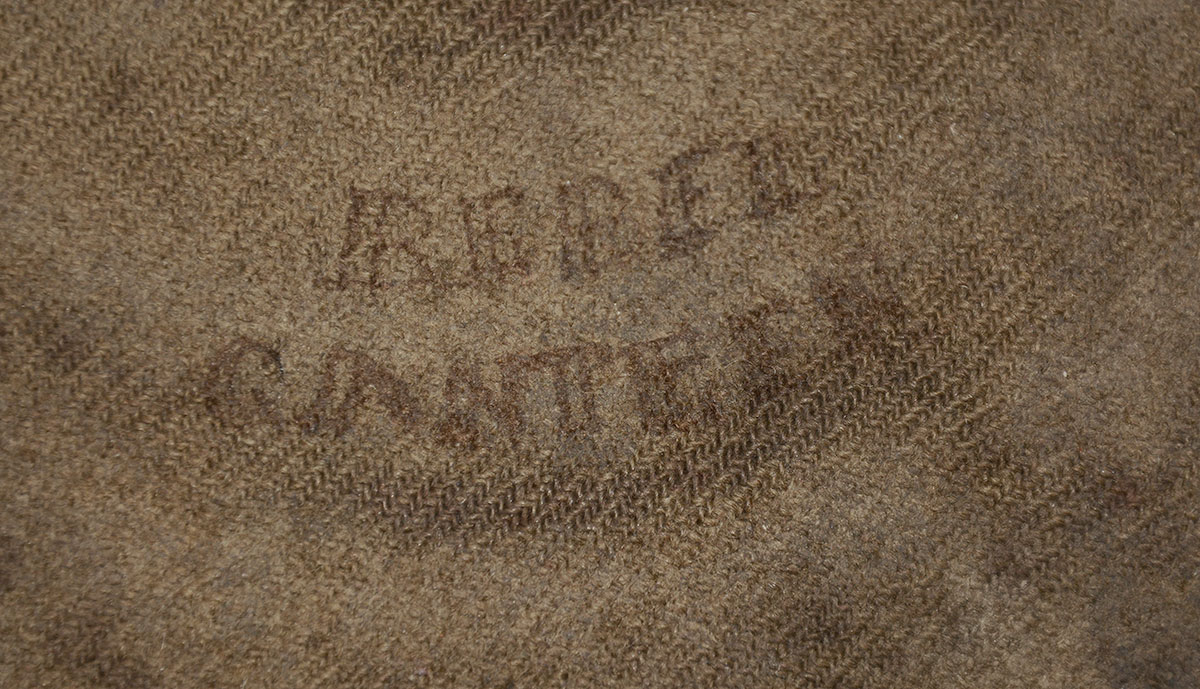
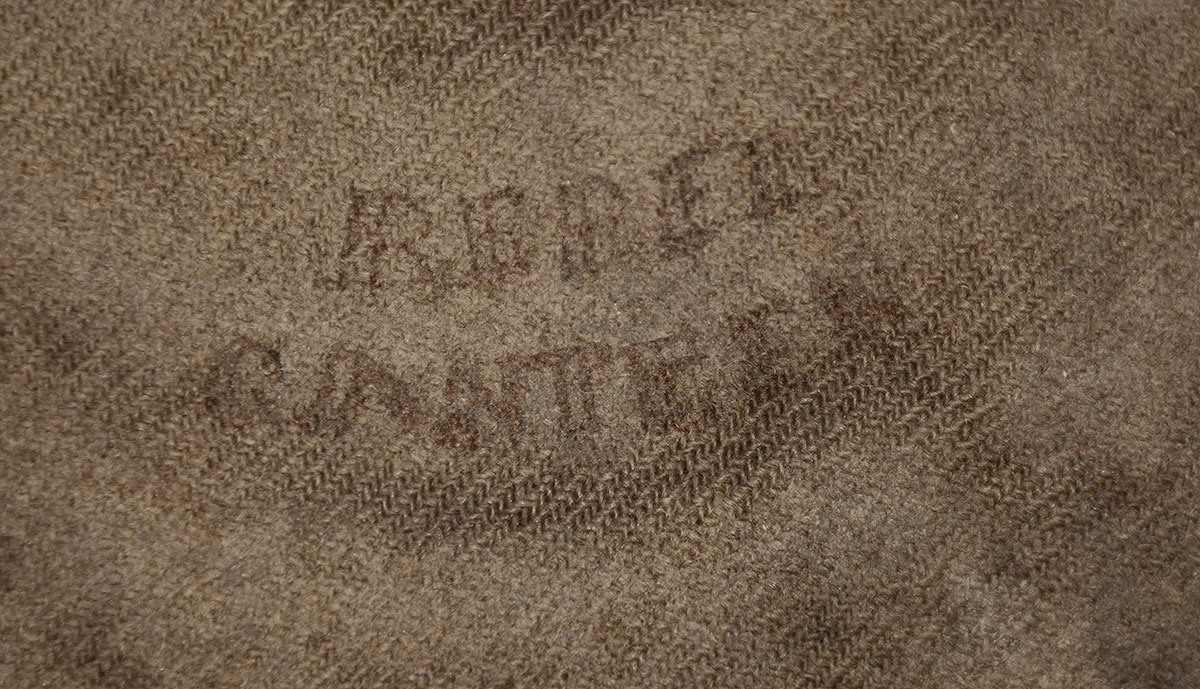
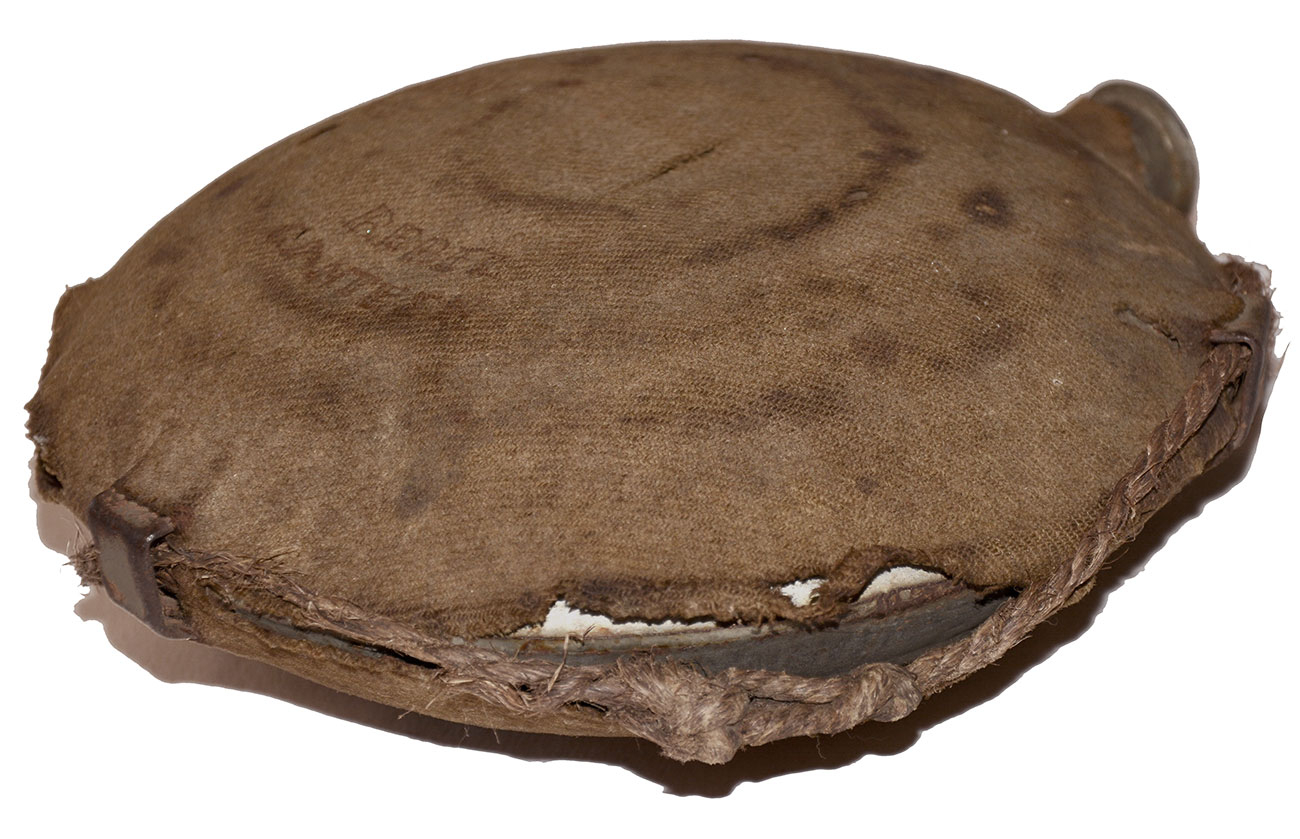
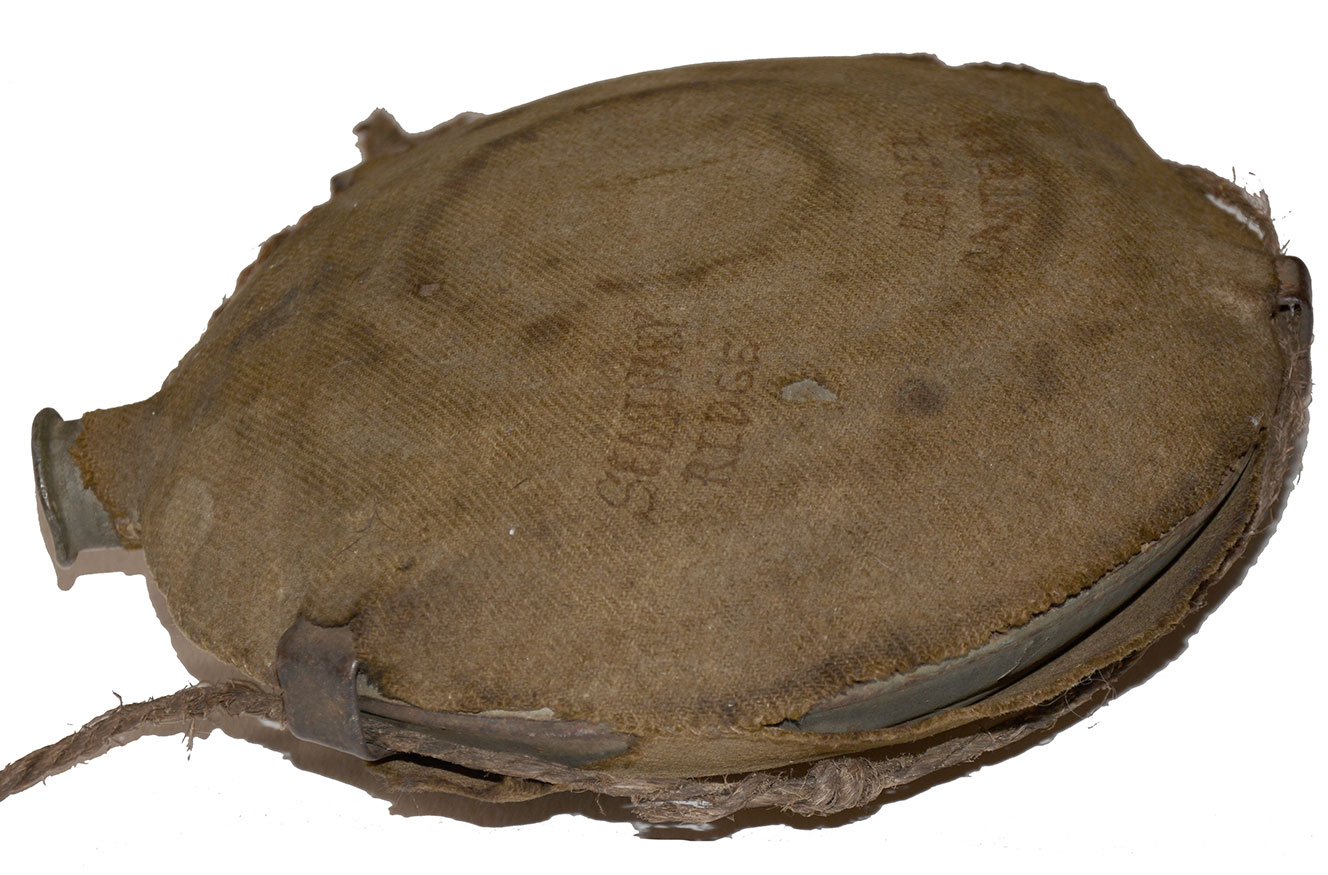
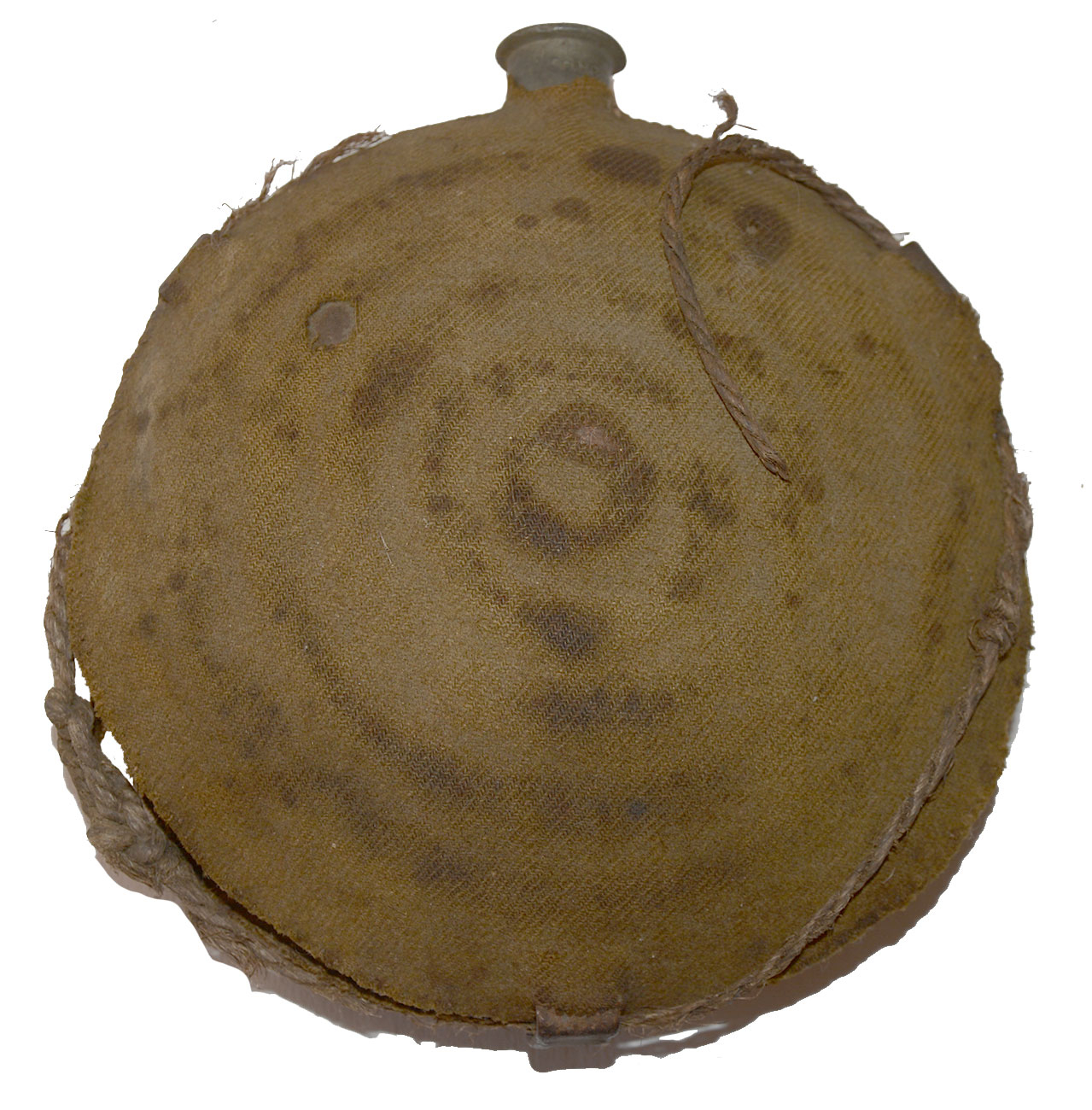
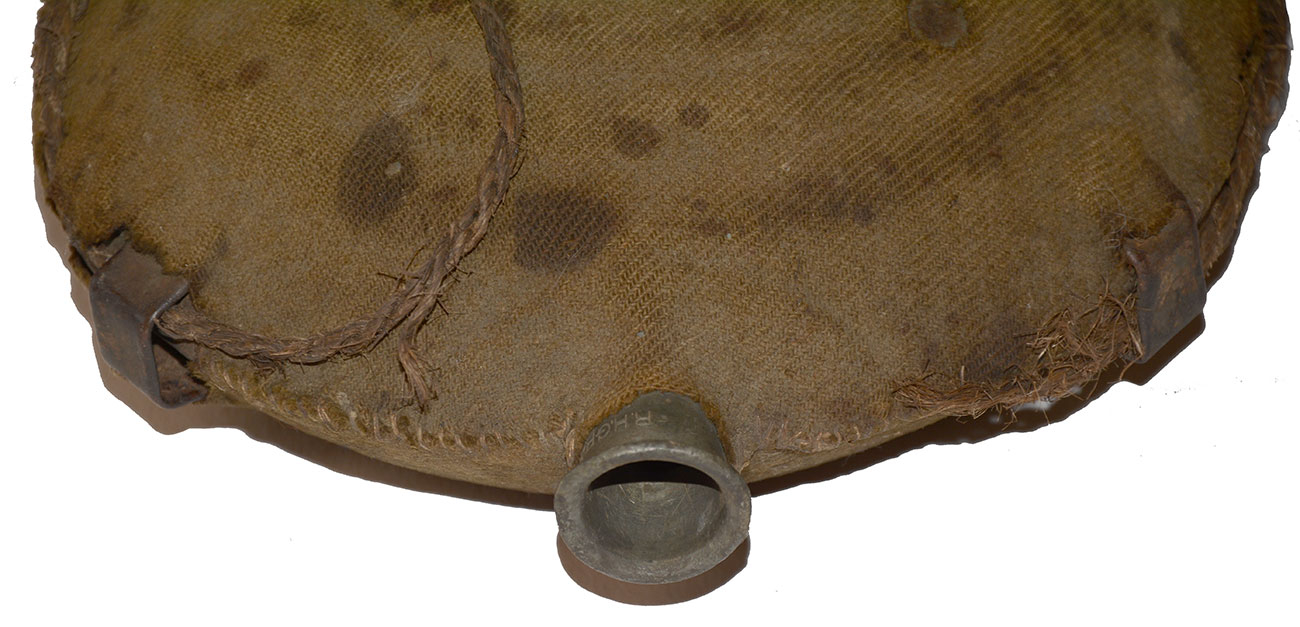
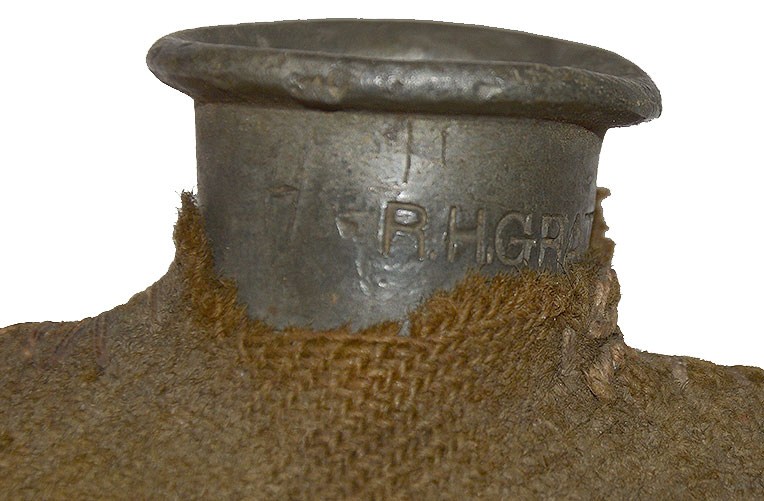
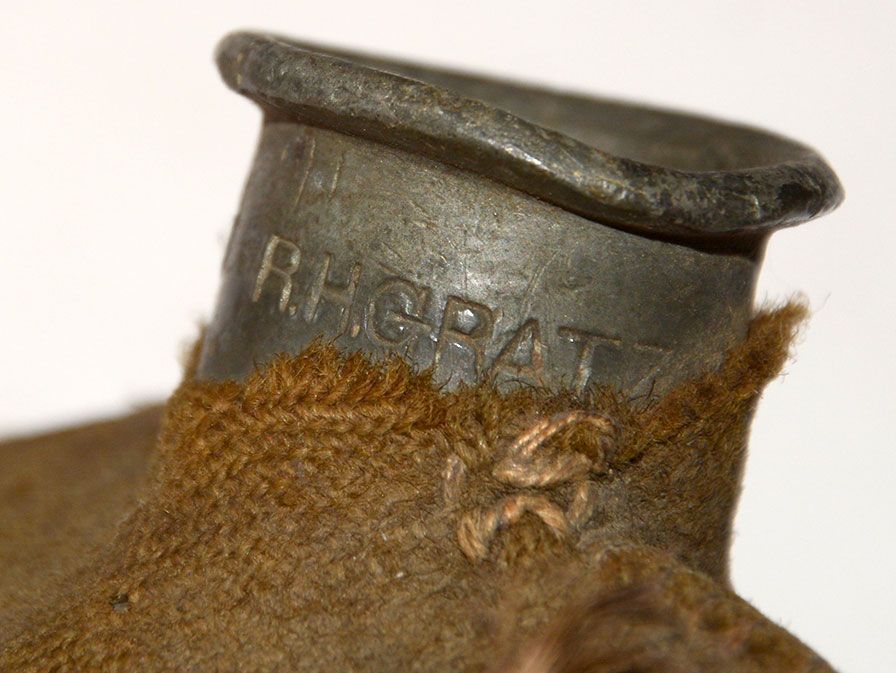
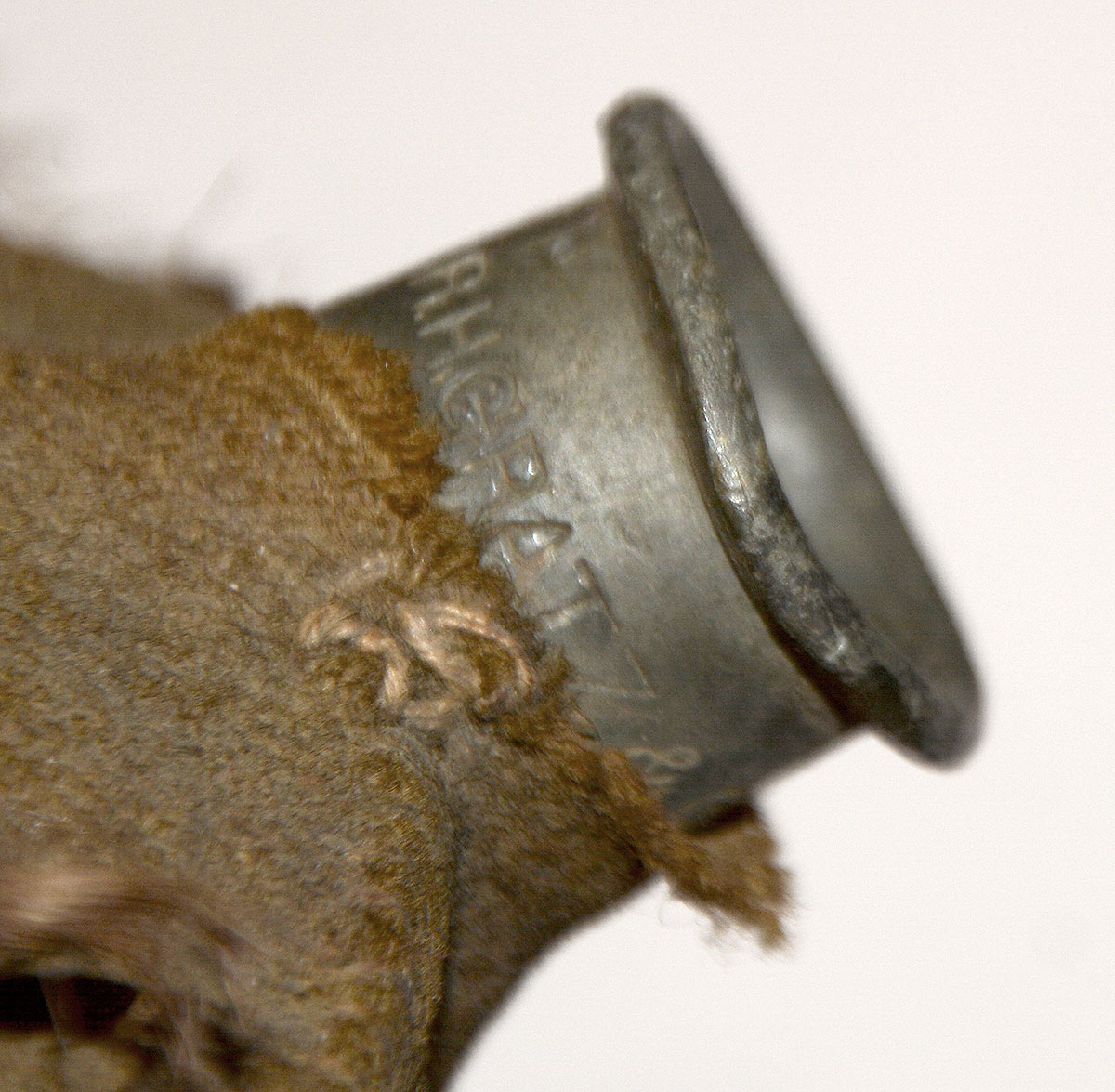
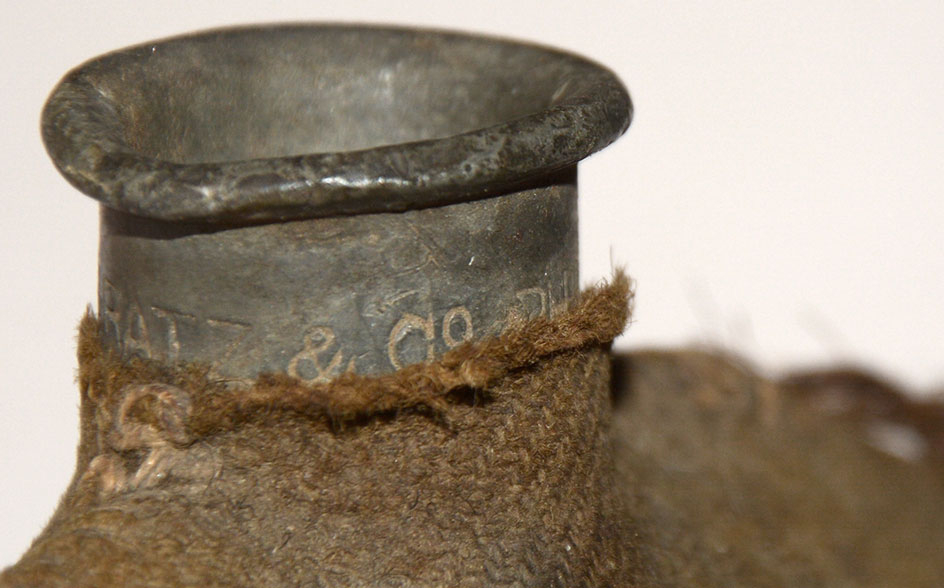
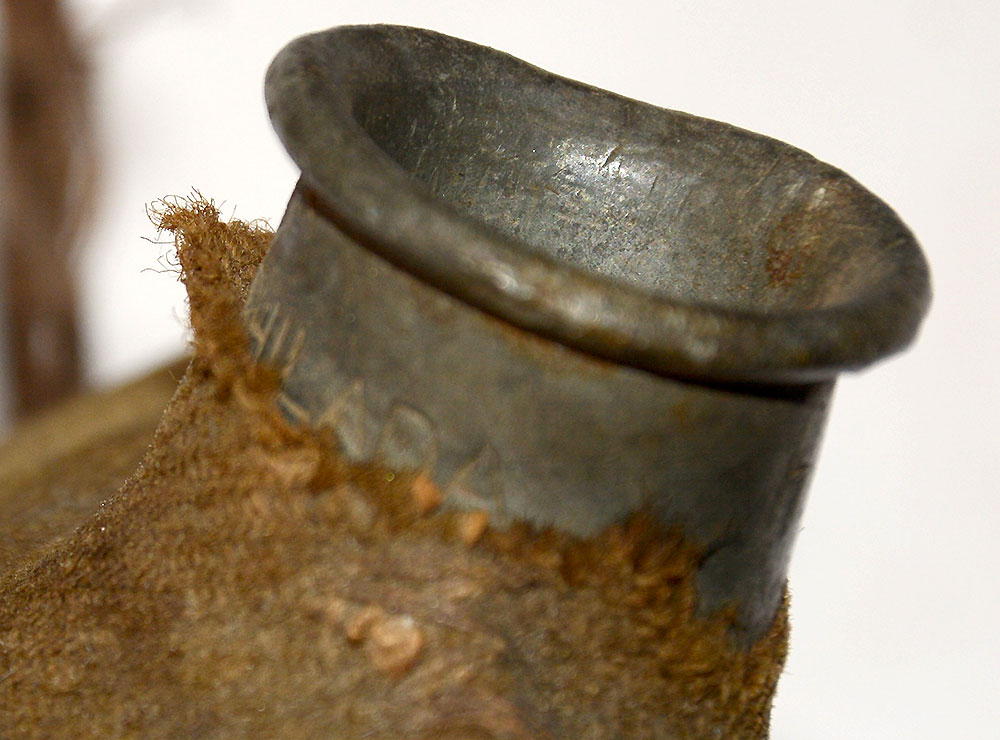
$2,250.00 ON HOLD
Quantity Available: 1
Item Code: 490-7397
This canteen was likely a Confederate capture at Chancellorsville or Second Winchester and lost by its captor in the first day’s fighting at Gettysburg along northern Seminary Ridge and the area of the Lutheran Theological Seminary. It bears a wonderful, period, brown ink inscription on the cover on one side reading “SEMINARY / RIDGE” at left center, near the edge, and “REBEL / CANTEEN” at lower center. The identification as Confederate must have been by the circumstances of its recovery, from a Confederate casualty or prisoner. It is not the prototypical cedar wood or flat-sided tin canteen associated with Confederates and there is no mistaking that it was a federal canteen by manufacture, showing not only the standard “oblate spheroid” shape and the recently introduced corrugated sides of U.S. canteens, but also bears the maker’s stamp quite clearly on the neck: “RH GRATZ & Co. PHILADA.”
The canteen was formerly in the collection of Lutheran Theological Seminary Professor and President Abdel Ross Wentz (1883-1976) and was purchased from his family. Students of Gettysburg will be familiar with the important role the Seminary played in the battle, with the main building, the “Old Dorm” with a cupola on top, serving as an observation post for Union officers in the first day’s fighting and the building serving as a hospital housing casualties during and after the battle. The connection with the Seminary could hardly have escaped Wentz’s attention: he was a professor of church history and, in particular, was author of a history of the Gettysburg Theological Seminary, so it would have made a very telling relic of the battle.
Robert Gratz, the maker of the canteen, was experienced in metal work, having manufactured gas meters, and he initially partnered with Code and Hopper to supply smooth-sided canteens in 1861. In 1862 he formed a new company under his own name and produced 5-ring corrugated canteens like this under contracts from July 1862 to July 1863. His July 1862 contract was the first to specify the canteens were to be corrugated, and they were also to be maker-marked starting with his August 11, 1862, contract for 18,333 canteens, which was followed by his contracts on August 23 for 8,000, August 31 for 30,000, and Sept. 15, for 30,000: a total of 86,333 canteens that would be both corrugated and bearing his mark. Gratz’s earlier canteens had not been marked, nor were canteens he supplied as a subcontractor to other firms and his next contract after Sept. 15, 1862, was on July 6, 1863, post-dating the battle and for just 3,950 canteens.
Gratz supplied his canteens uncovered to the Philadelphia Depot, where they were strapped and covered using one of the many different types of army cloth that could run from brown and gray to reddish brown and even dark blue when they dug into their supplies of uniform cloth. Given his prodigious rate of production, reaching 2,000 a day in some instances, it is possible this canteen had been made and issued in time for capture at Fredericksburg, but there had been some production delays,occasioned by workers losing hands in metal presses, for example. A capture in the Chancellorsville Campaign thus seems more likely- Hooker had been raising morale by efficient delivery of supplies before the campaign- but Second Winchester seems the most likely. The victory had yielded a motherload of arms, equipment and supplies to Ewell’s Corps on its way north in mid-June and it was Ewell’s troops who led the way in the first day’s fighting at Gettysburg.
The condition is very good, appropriate for an early battlefield pickup or acquisition from a Confederate casualty, and indicating he had likely not owned it long either. The cover is complete, light brown in color, showing dark stains, mostly where the raised rings of the corrugated faces are in contact with the fabric, but very few holes. The sling brackets are in place. Remnants of a cord are with it that the Wentz family had thought was an improvised sling, but we suspect was simply used to hang it up for display somewhere as a battlefield relic.
For details on US canteens we recommend Mike O’Donnell’s “US Army and Militia Canteens 1775-1910,” and for Gettysburg relics in particular it is hard to beat “Gettysburg Battlefield Relics & Souvenirs” by O’Donnell, Hazard, and Boardman. This displays very nicely and could be the centerpiece for a display of relics from the first day’s field in the most famous battle of the war. [sr] [ph:L]
~~~~~~~~~~~~~~~~~~~~~~~~~~~~~~~~~~~
THIS ITEM, AS WITH ALL OTHER ITEMS AVAILABLE ON OUR WEB SITE,
MAY BE PURCHASED THROUGH OUR LAYAWAY PROGRAM.
CLICK HERE FOR OUR POLICIES AND TERMS.
THANK YOU!
Inquire About THE FIRST DAY’S FIGHT AT GETTYSURG: “REBEL CANTEEN” FOUND ON “SEMINARY RIDGE”
Most Popular
Historical Firearms Stolen From The National Civil War Museum In Harrisburg, Pa »
Theft From Gravesite Of Gen. John Reynolds »
Selection Of Unframed Prints By Don Troiani »
Fine Condition Brass Infantry Bugle Insignia »
Large English Bowie Knife With Sheath 1870’S – 1880’S »
Imported (Clauberg) Us Model 1860 Light Cavalry Officer's Saber »
featured item
IDENTIFIED CONFEDERATE CAPTAIN’S FROCK COAT OF CAPTAIN PHARES WALDO SHEARER, 45th MISSISSIPPI, WITH 28-PAGE REMINSCENCES AND VETERAN’S BADGE- HE EXCHANGED SALUTES WITH THE WOUNDED JOHN BELL HOOD AT CHICKAMAUGA
This coat came directly out of the family along with a reunion badge and type-written copy of the officer’s 1906 reminiscences. The coat was formerly in the collection of Steve Mullinax, is accompanied by a file containing details of its… (1179-179). Learn More »


